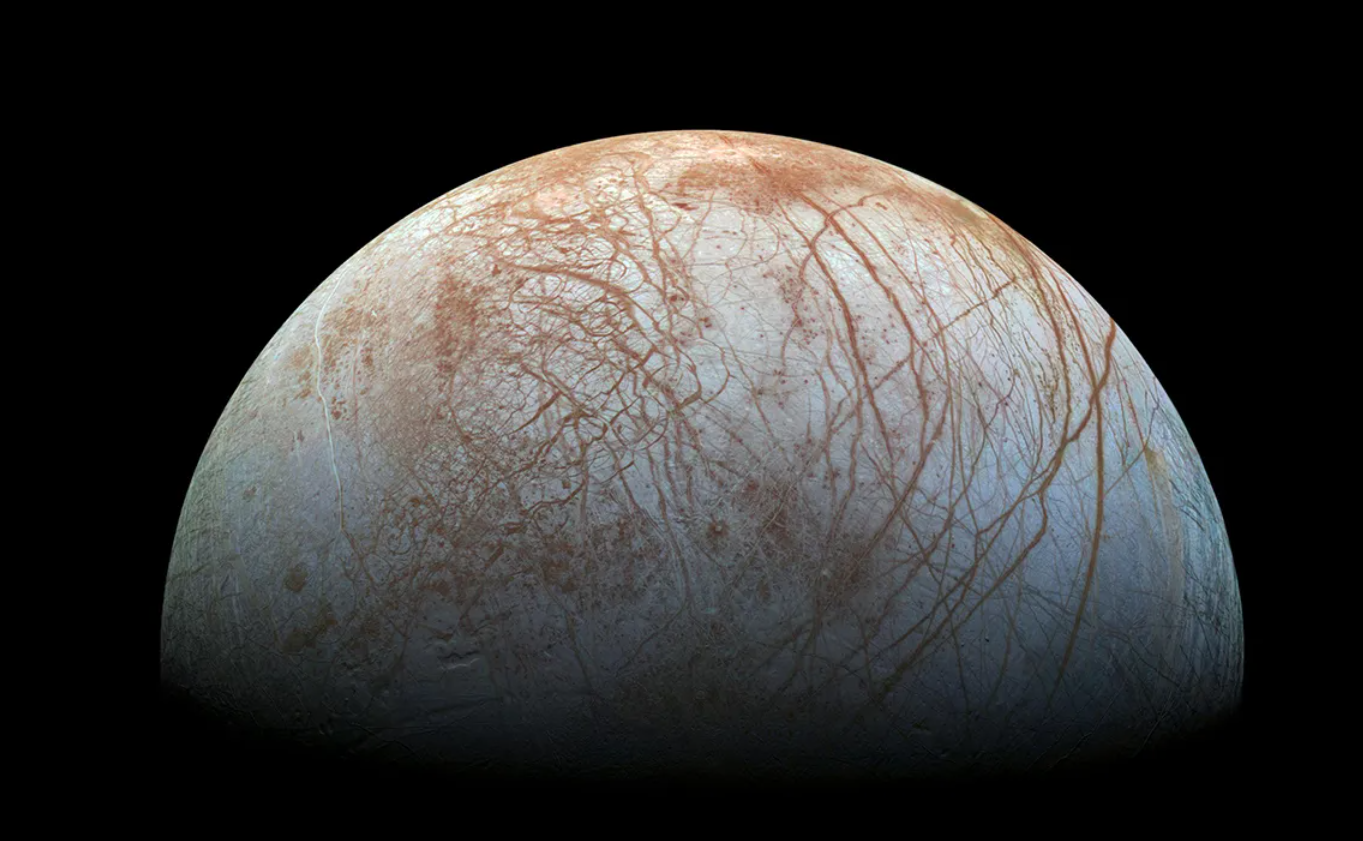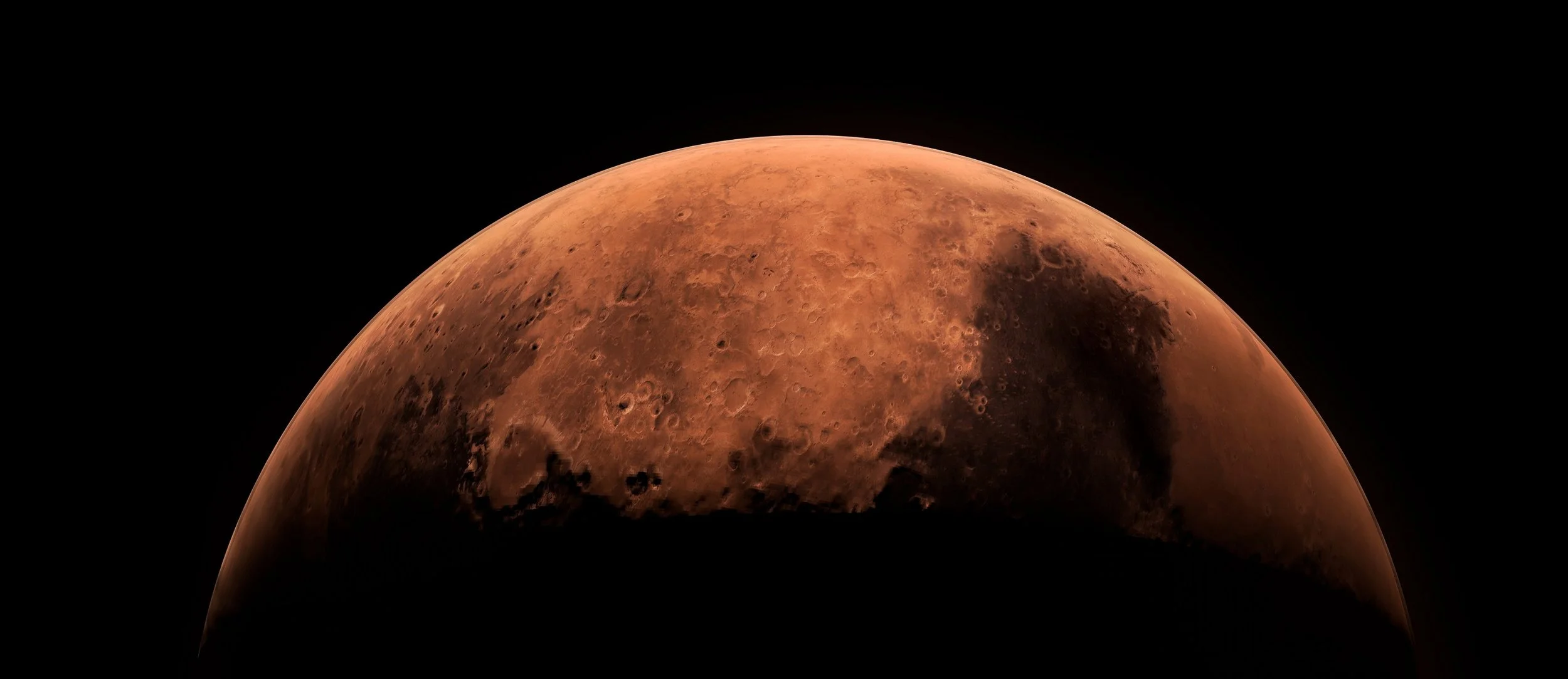For a while now, the icy moons that circle Saturn and Jupiter have been considered among the most interesting worlds in our solar system. Why? Because scientists think these frozen worlds could be hiding something extraordinary beneath their icy shells—potential signs of life beyond Earth.
A collaboration between researchers at the University of Washington in Seattle, Freie Universität Berlin, and an international team has brought us one step closer to finding out whether there is life out there. They published their work in the peer-reviewed journal Science Advances.
In this article, we'll briefly go over their interesting findings.
Europa, the smallest of the four Galilean moons orbiting Jupiter, as seen from NASA's Galileo spacecraft. (Credit: NASA/JPL-Caltech/SETI Institute)
Ice Grains as Carriers of Extraterrestrial Life
The study suggests that tiny grains of ice, ejected from the moons' surfaces, floating through space could carry with them the signs of life, waiting to be uncovered by the instruments aboard upcoming space missions.
According to Fabian Klenner, lead author of the study, it is the first time that scientists have shown that even a tiny fraction of cellular material could be identified by a mass spectrometer onboard a spacecraft. The results give more confidence that researchers, using upcoming instruments, will be able to detect lifeforms similar to those on Earth, which we increasingly believe could be present on ocean-bearing moons.
Simulating Space Conditions to Find Life
The team's research focused on a particular type of bacteria found in cold, nutrient-poor waters, much like what we expect under the ice of moons like Enceladus and Europa. This choice wasn't random. These bacteria are hardy survivors, thriving in conditions that would be inhospitable to many forms of life. If we're to find life on these icy moons, it might well resemble these tenacious organisms.
An artist's impression of Saturn's moon Enceladus shows hot water shooting up from the bottom of the ocean and cracks in the ice surface. These cracks let water and other stuff from inside shoot out into space. - (Credit: NASA/JPL-Caltech via ESA)
But how do you study something so far away, something potentially hidden beneath miles of ice? You simulate it, of course. The researchers couldn't exactly launch ice grains at a spacecraft to see what would happen, so they did the next best thing.
They created a fine mist of water, hit it with a laser, and analyzed the resulting droplets. This clever setup mimics what a spacecraft's instruments might encounter as it flies through the plumes of water vapor and ice ejected from these moons.
Related article: Why Jupiter's four largest moons are among the most interesting worlds of our solar system (Universal-Sci)
The Future of Space Exploration and the Search for Life
Their findings are promising. The upcoming Europa Clipper mission, features a spacecraft equipped with the latest in space exploration technology, including the so called SUrface Dust Analyzer (SUDA), could detect the cellular material of organisms like the ones studied, even if they're present in just one out of hundreds of thousands of ice grains.
What's more, the study also delves into how life, if it exists on these moons, might end up in those ice grains. On Earth, ocean spray carries microorganisms; on Enceladus or Europa, subsurface oceans might release gas bubbles that burst at the surface, trapping cellular material in the ice that gets ejected into space.
This isn't just about finding life. It's about understanding the conditions that support it, and in doing so, learning more about our own planet, our solar system, and the possibilities of life beyond.
With missions like Europa Clipper on the horizon, we're on the cusp of potentially groundbreaking discoveries. Who knows what secrets are waiting in the ice? If you are interested in more details about the underlying research, be sure to check out the article published in Science Advances, listed below.
Sources and further reading:
SUrface Dust Analyzer (SUDA) (NASA)
Europa Clipper (NASA JPL)
How to identify cell material in a single ice grain emitted from Enceladus or Europa (Science Advances)
Too busy to follow science news during the week? - Consider subscribing to our (free) newsletter - (Universal-Sci Weekly) - and get the 5 most interesting science articles of the week in your inbox
FEATURED ARTICLES:







The way you prepare your vegetables affects their nutritional value. What is the healthiest method to prepare them?